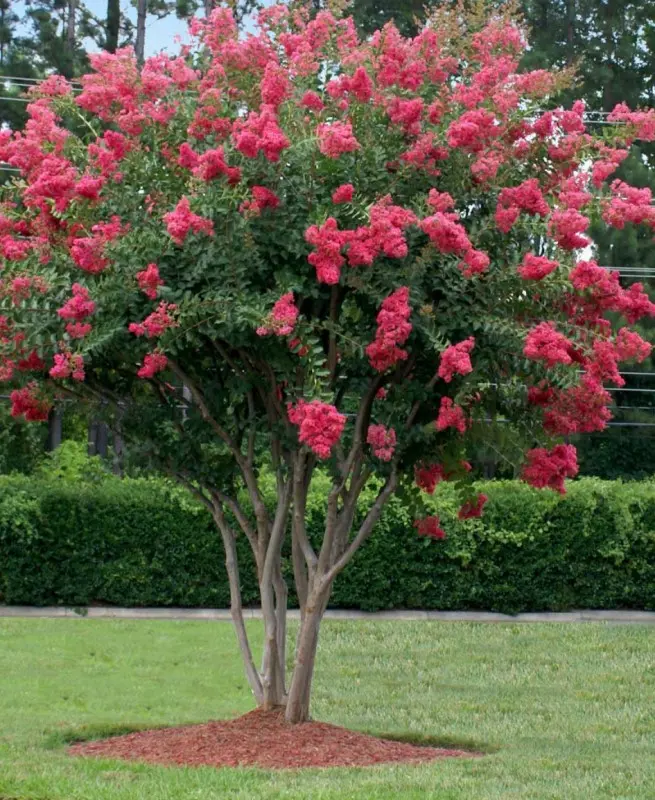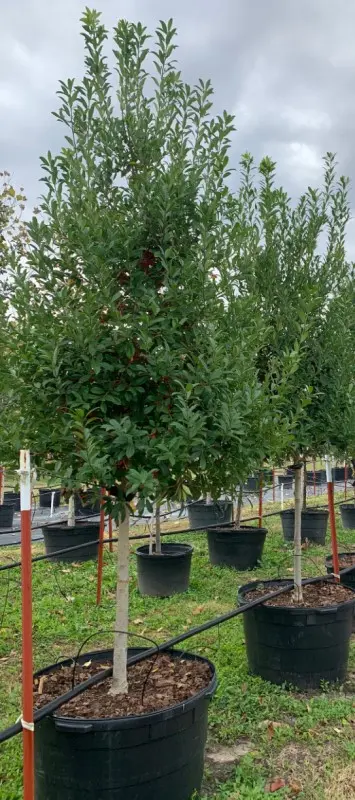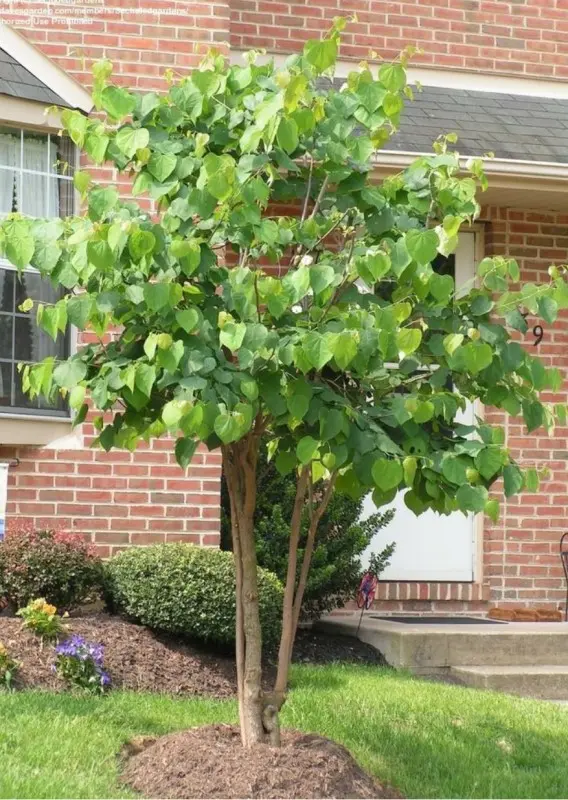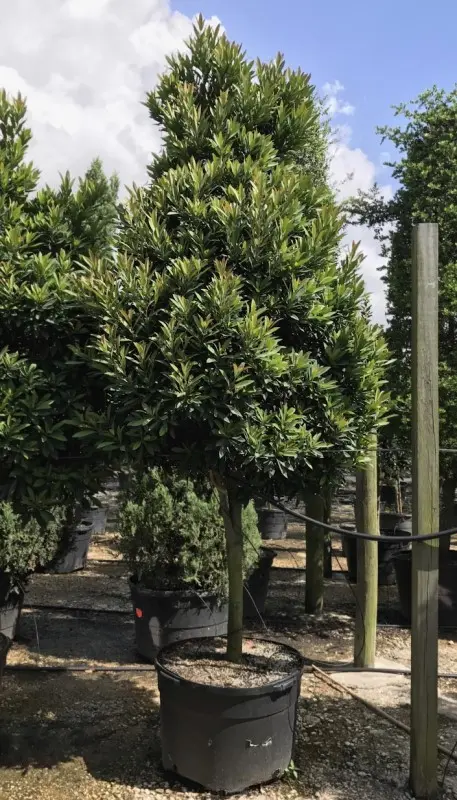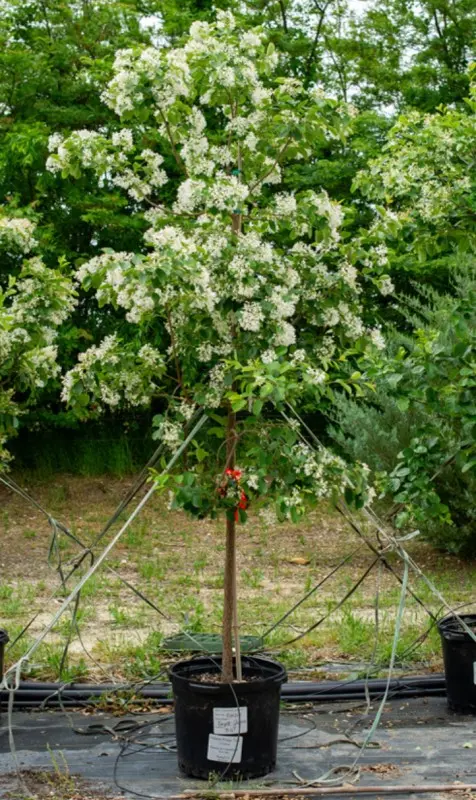Description
Crepe Myrtle (Lagerstroemia spp.) is a beloved deciduous tree or large shrub known for its long-lasting, vibrant blooms, attractive bark, and minimal maintenance needs. Native to Asia, Crepe Myrtles are popular in warm climates for their showy clusters of flowers that bloom from late spring through early fall. Flowers appear in shades of pink, red, purple, white, and lavender, adding vivid color to landscapes over an extended season. The tree’s distinctive, smooth, mottled bark sheds in thin layers, revealing a handsome, polished look that adds interest even in winter.
Crepe Myrtles vary greatly in size, from dwarf varieties as small as 3-5 feet tall to large trees reaching 20-30 feet, depending on the species and cultivar. They thrive in USDA zones 6-10 and prefer full sun, which promotes the best bloom production and helps prevent powdery mildew. Crepe Myrtles are adaptable to various well-draining soil types, including sandy, clay, and loamy soils, and are drought-tolerant once established, making them ideal for low-water gardens.
Low-maintenance and resilient, Crepe Myrtles require only occasional pruning to remove any deadwood or to shape the tree. Pruning in late winter encourages new growth and enhances flowering. These trees are often used as ornamental focal points, in rows along driveways, or as flowering hedges in both formal and informal gardens.
With their vibrant blooms, attractive bark, and adaptability, Crepe Myrtles are a favorite for adding year-round beauty and interest to landscapes, especially in Southern gardens.

